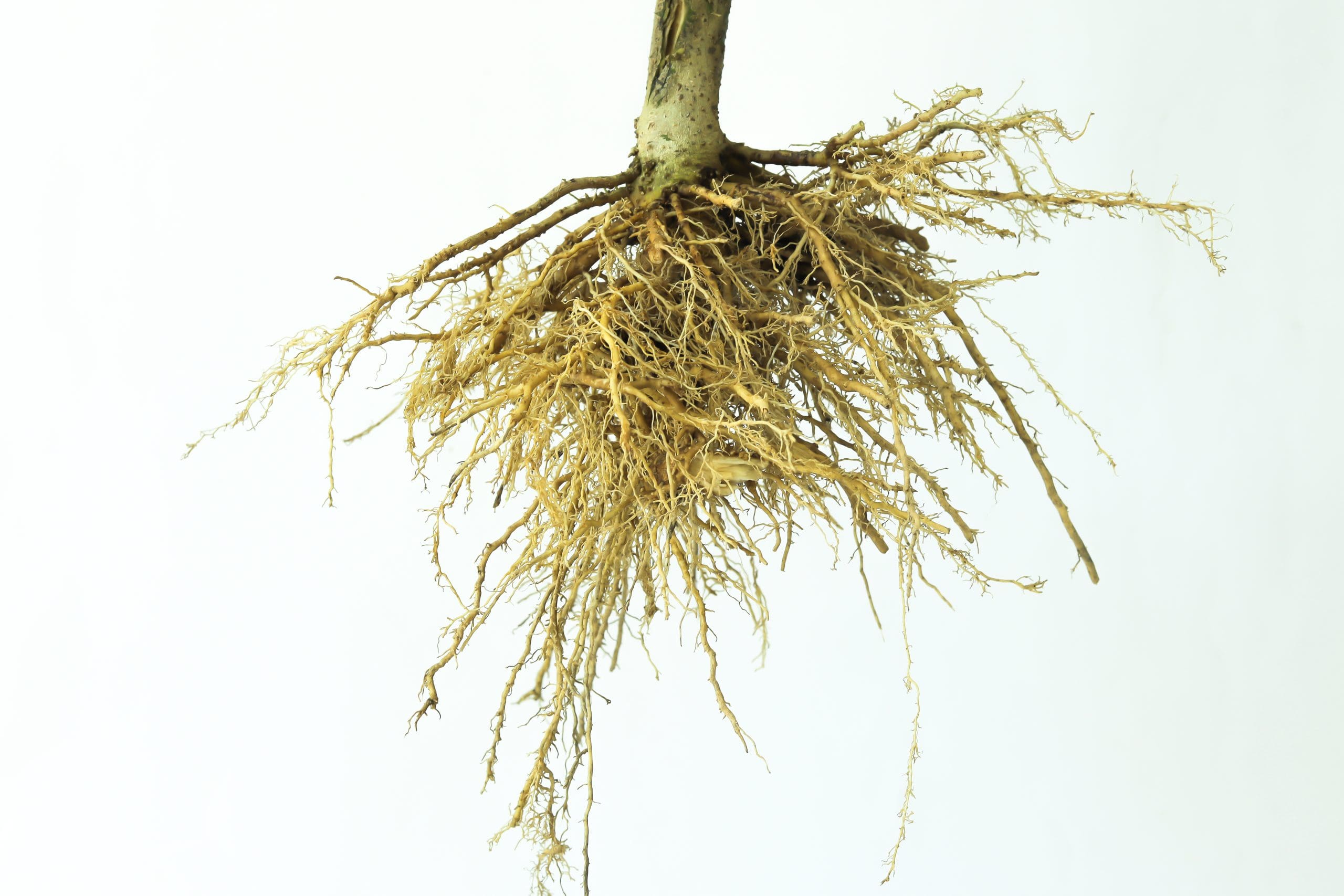
Fibrous roots are thin roots with fine hairs that form a dense network of roots within the soil. The purpose of fibrous roots is to absorb nutrients and water for the plant from the surrounding soil.
Fibrous roots anchor plants into the ground to prevent them from falling over in the wind. Fibrous roots are also effective and useful in the prevention of soil erosion in locations like hillsides, bunds and embankments by anchoring plants into the top layer of the soil. Example: Plants such as grasses are particularly efficient in stabilizing soil erosion.
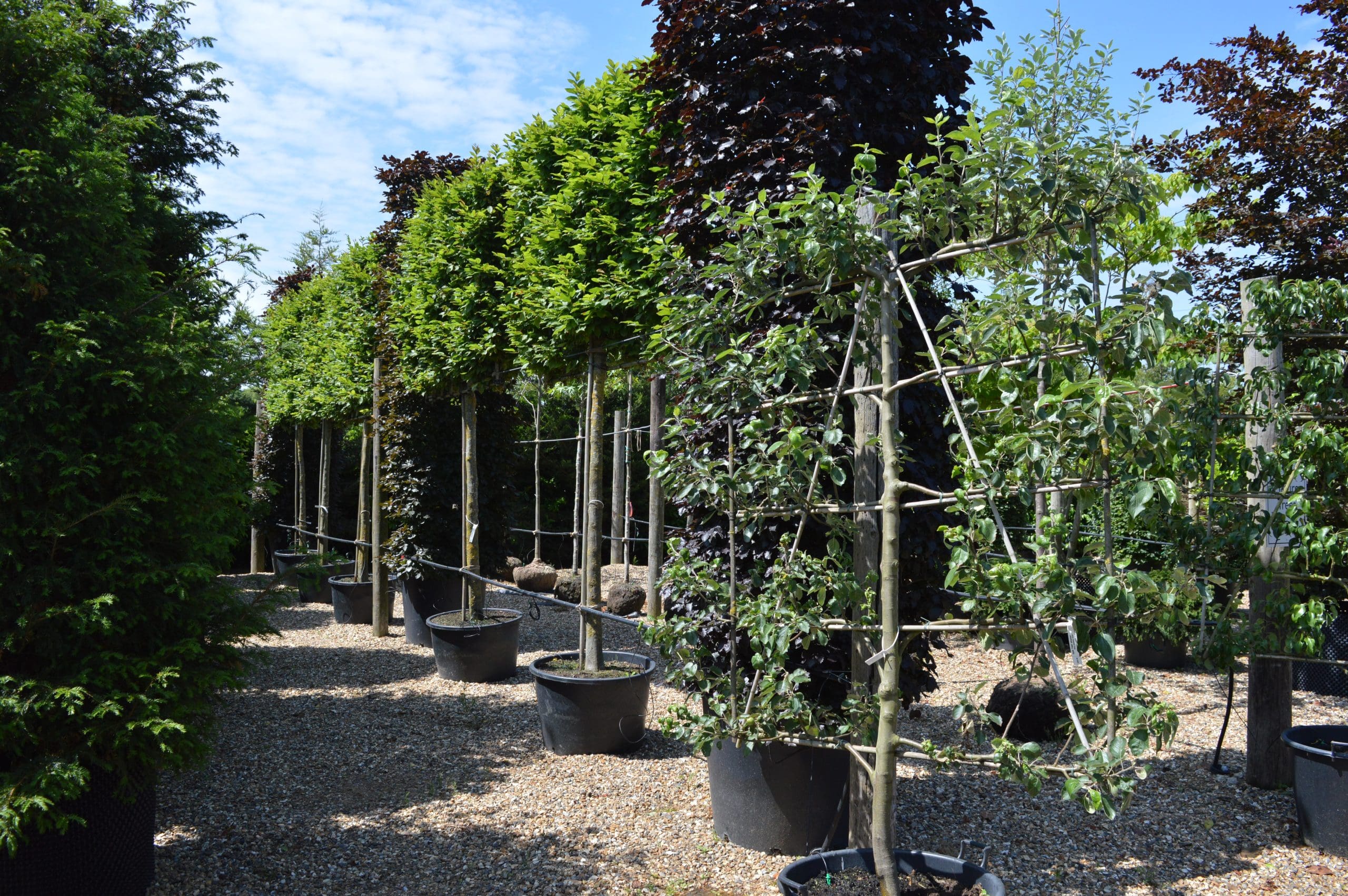
When plants are grown out of the ground in pots, troughs or bags they are known in the trade as container grown plants. These plants are produced mostly for selling during the summer months when other seasonally purchased plants are unavailable.
Even large specimen plants are grown in containers for summer planting projects.
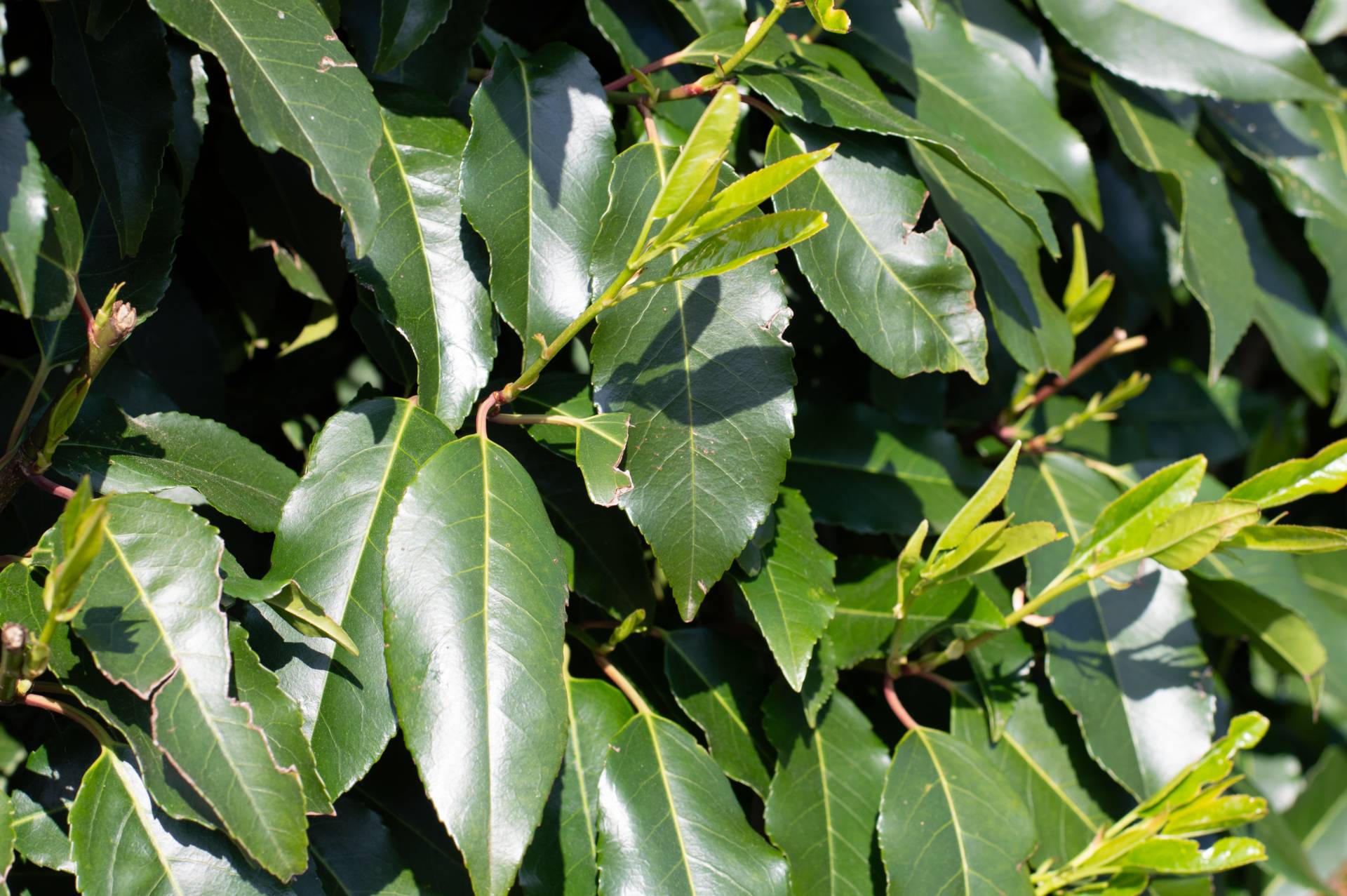
In horticulture an evergreen is a plant that has green leaves on its branches all 12 months of the year. Evergreen plants include most conifers and others like hollies, laurels, palms and rhododendrons.
Evergreens do drop their leaves when they become too old, in most cases after seven years but the plants are constantly growing new leaves so the plants always remain in leaf and evergreen.
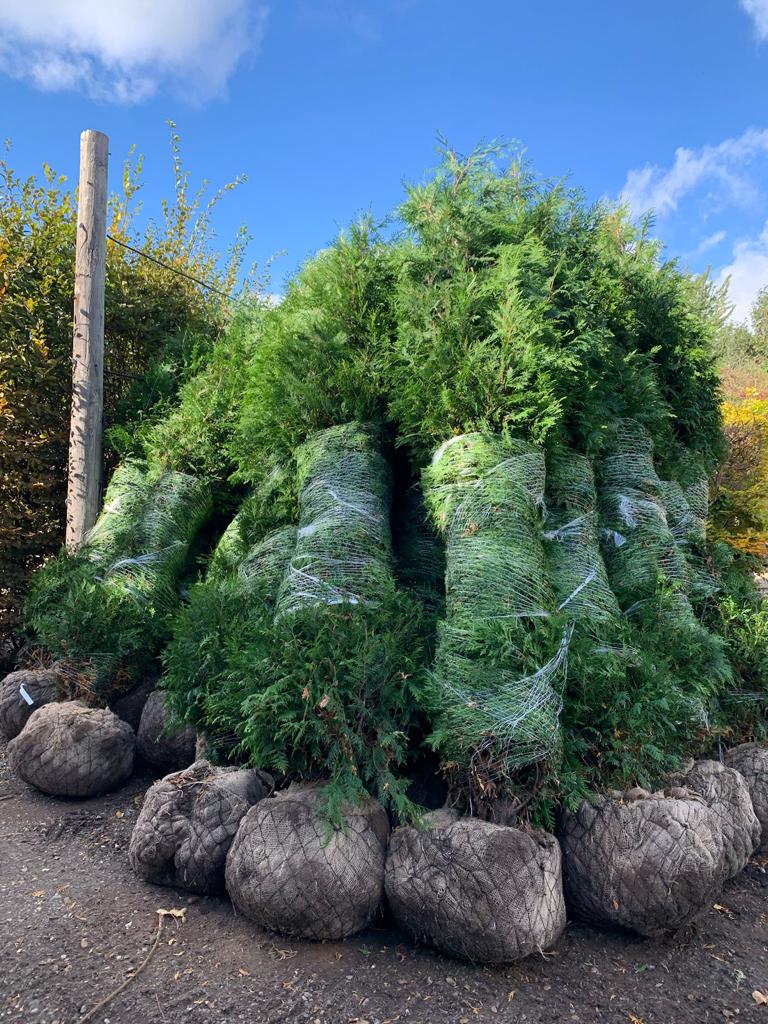
Hedges and trees are often supplied in the form of a root ball. This is when a plant has been specifically grown in the ground with the purpose to then be lifted and moved elsewhere.
A root balled plant is dug up from the ground usually by a specialized machine with rounded blades that resemble a circle of large pointed garden spades. The machine operator can move apart these sharp cutting spades, to be able to drive up to the plant and close them into position. The blades are then mechanically forced into the ground until it creates a rounded ball consisting of the soil and the plants main roots.
The machine then lifts the plant out of the ground and carefully places it onto a square of wire-net and hessian mat. The hessian mat is pulled up and wrapped around the ball, then followed by the wire net which holds the hessian in place by twisting and tightening the wire.
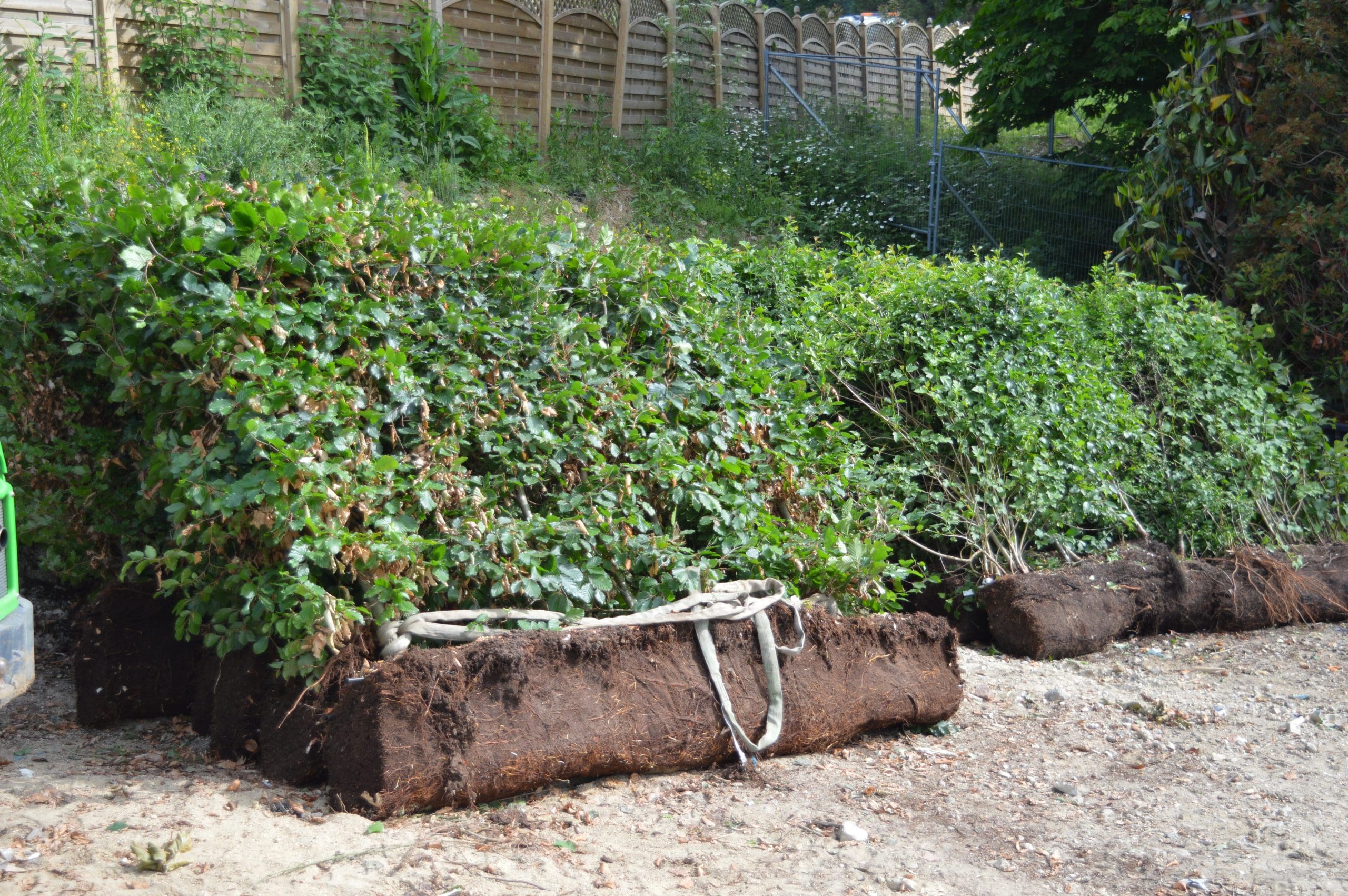
Root strips are created when rows of plants are planted closely together, usually into and along a straight, narrow trench. The sole purpose of growing them like this is so we can provide ‘instant hedges’.
When they are fully grown and ready for selling, they are lifted out of the ground in long narrow lengths called root strips. This is because the roots of each individual plant have grown along the trench into and around each other to create a strip full of their roots. These root strips can be lifted in various lengths from 50cm up to 250cm.
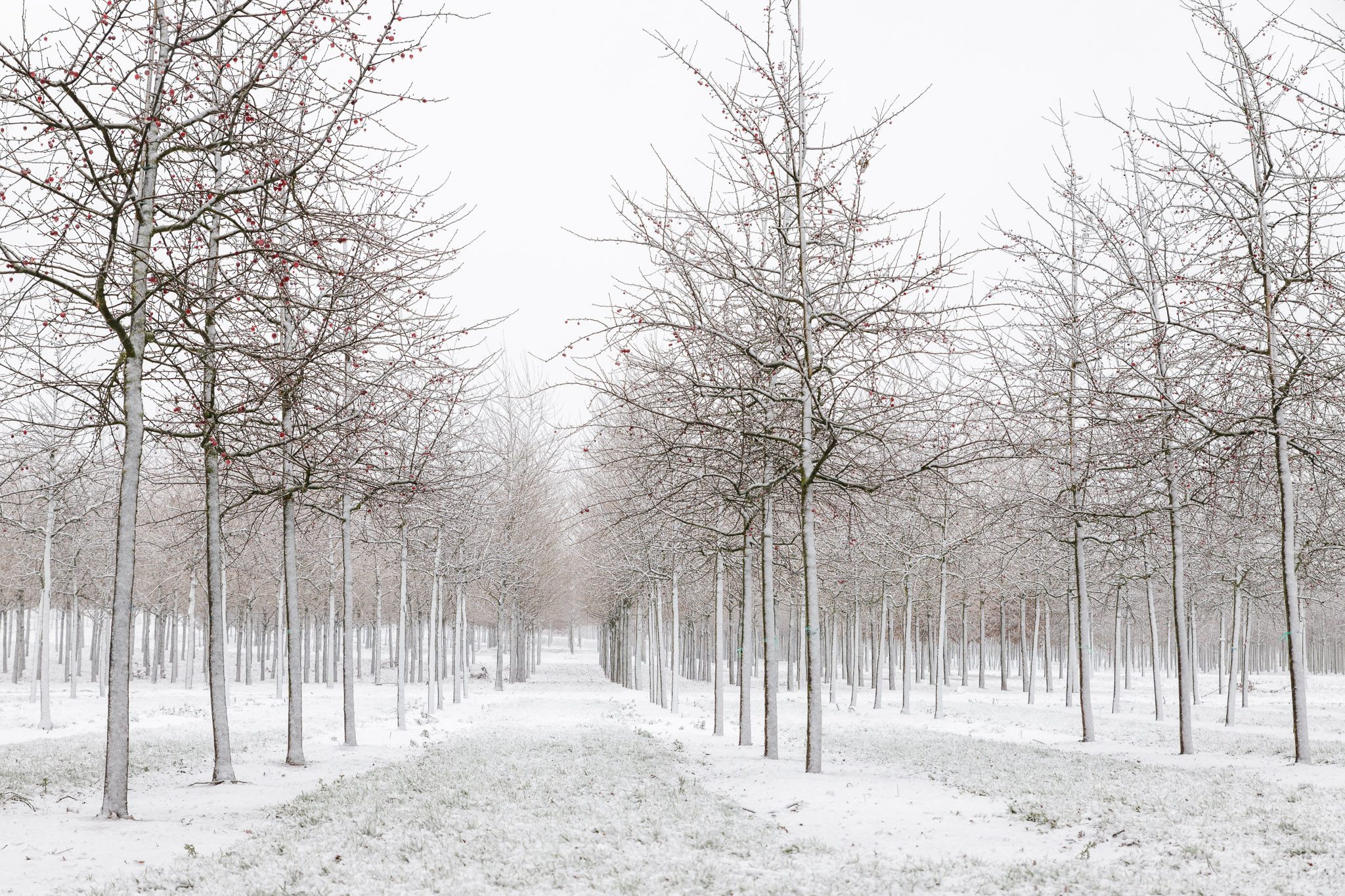
The word deciduous comes from the Latin word ‘’decidere’’ which means ‘’to fall off’’ and is a botanical reference to plants that seasonally shed their leaves.
A deciduous plant sprouts new leaves during the spring, when the weather is becoming warm. The leaves then remain on the plant through the summer months and until the autumn, when the weather begins to cool.
The leaves drop and the plant goes into dormancy. Basically, going into a long sleep that lasts all through the cold winter months (just like hedgehogs and squirrels do), until the following spring, when they wake up and burst back into life for another annual cycle of the same events.
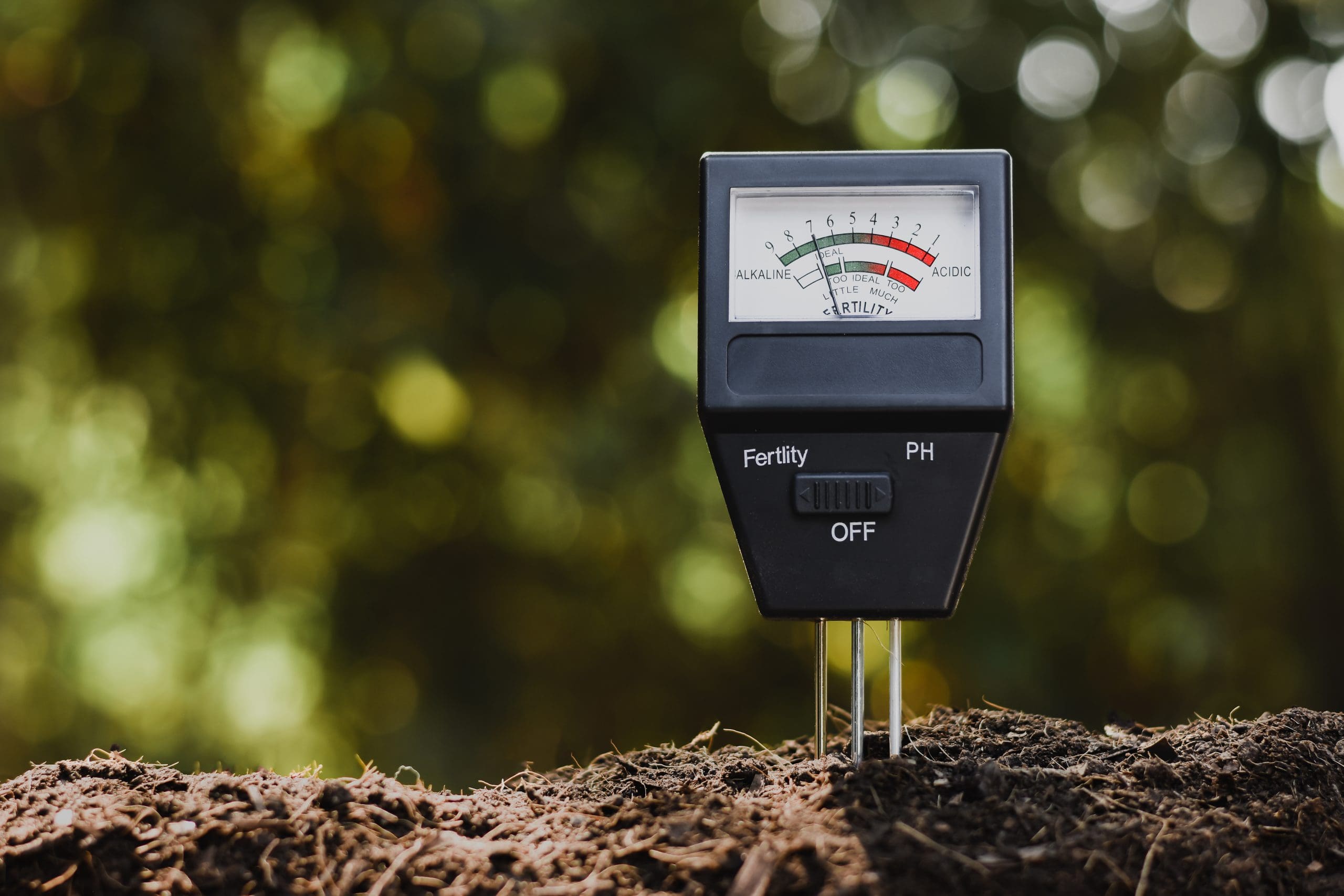
Soil pH is a measurement of acid and alkaline within the soil and is measured on a scale from 0 to 10.
In horticulture, the measurement of 6.0-7.0 pH is known as slightly acidic to neutral pH This is the measurement that the majority of plants used in UK gardens and landscaping projects will happily grow and thrive.
Some plants such as Rhododendron and Azalea will only grow in soils with a good acidic pH.
Some plants like Lavender and Geraniums need soils with good alkaline pH.
0 – 3.9 = very strongly acid
4.0 – 4.9 = strongly acid
5.0 – 5.9 = moderately acid
6.0 – 6.9 = slightly acid
7.0 = neutral
7.1 – 7.9 = slightly alkaline
8.0 – 8.9 = strongly alkaline
9.0 – 10 = very strongly alkaline
If you have any questions, or if you’d like to order;speak to our friendly team today!